Tom's Guide Verdict
Check out the LG Dual Inverter air conditioner if you're looking for a quiet and efficient window unit. But its smartphone app needs work.
Pros
- +
Works with Alexa and Google Assistant
- +
Quiet
- +
Attractive
- +
Cools efficiently
Cons
- -
Heavy
- -
Limited smart home compatibility
Why you can trust Tom's Guide
One of the benefits of a smart thermostat is that you can control it remotely and connect it with other smart home devices, such as Alexa and Google Home. But what if you don't have a central air system but instead have to use window air conditioners to keep your place cool?
LG's SmartThinQ Dual Inverter air conditioner ($469) has built-in Wi-Fi, so you can control it from your phone and with Alexa and Google Assistant. It's also more efficient and quieter than other air conditioners, but it's not as smart as it should be.
Design and Setup: Some assembly required
LG's dual-inverter window air conditioner is a much sleeker-looking unit than most window AC units. Rather than having a bunch of slats in the front, the face of the unit is a solid white piece of plastic. (It sucks in air from underneath.)
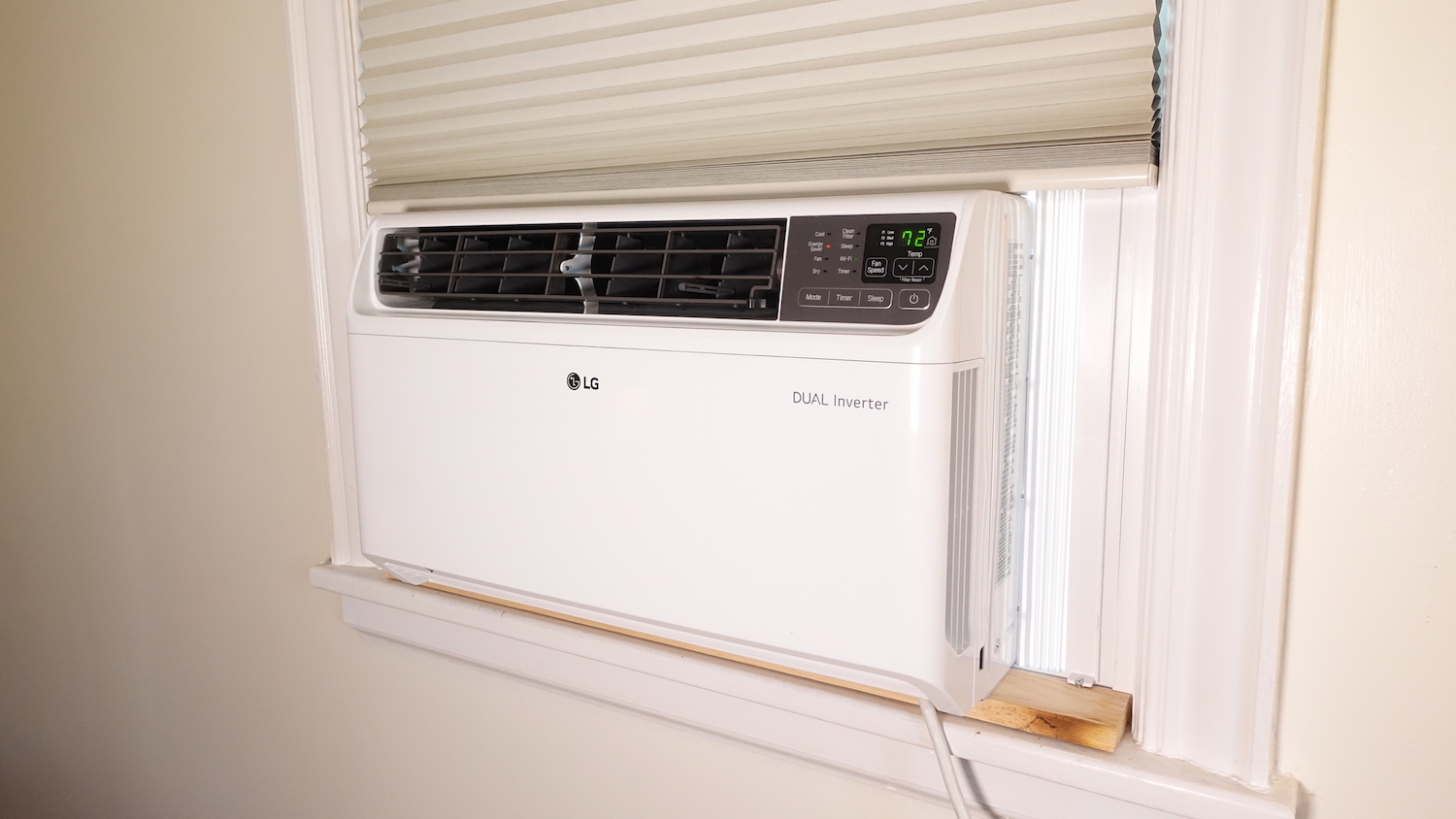
I tested LG's smallest version of this model, but it still weighed in at a good 98 pounds. Lifting this thing into the window is definitely a two-person job. In all, it took about an hour to get it in my window. The directions are straightforward, but following all of them is a bit time-consuming.

Part of the reason for that was that I had to cut several strips of wood to help support the air conditioner as it rested on my window sill. The instructions also recommend that you screw the unit's frame directly into your windowsill; I'd rather not put holes into the sill, so I used a three-quarter-inch piece of moulding instead.
My biggest complaint is that at the very end of the instructions, it recommends installing a drain pipe at the rear of the air conditioner if you live in a humid climate. By this point, I had already mounted the air conditioner in my window, and I wasn't about to slide it back out again.
Performance: Silent cooler
The LG air conditioner uses what LG calls a dual inverter compressor, which the company says both saves energy costs and is quieter than traditional air conditioners. Rather than having a compressor that simply turns on and off, the LG’s compressor is able to adjust its speed.

In practical terms, that means you no longer hear a clunk and sudden increase in noise when the A/C goes from just having its fan on to actually cooling your room. It sounds like more of a gradual windup, like a jet engine getting ready for takeoff — just much, much quieter. When it senses it doesn't need to work as hard, it winds down gently, too.
To test this system's effectiveness, I set up the unit in my 17 x 13-foot bedroom, with the air conditioner in a window on one of the short sides of the room and a thermometer (about 14 feet away) on the other side. On an evening on which the ambient temperature outside was around 90 degrees, the LG air conditioner cooled the room by 10 degrees Fahrenheit, from 84 degrees down to 74 degrees, in 50 minutes.
By comparison, my older, nonsmart, through-wall LG air conditioner took 1 hour and 20 minutes to cool the room by the same amount.
MORE: What Are Smart Air Conditioners (and Are They Worth It?)
I cranked both air conditioners to their max and measured how loud they were from a distance of 14 feet. The Dual Inverter unit was quieter, 56 decibels to 60 decibels.
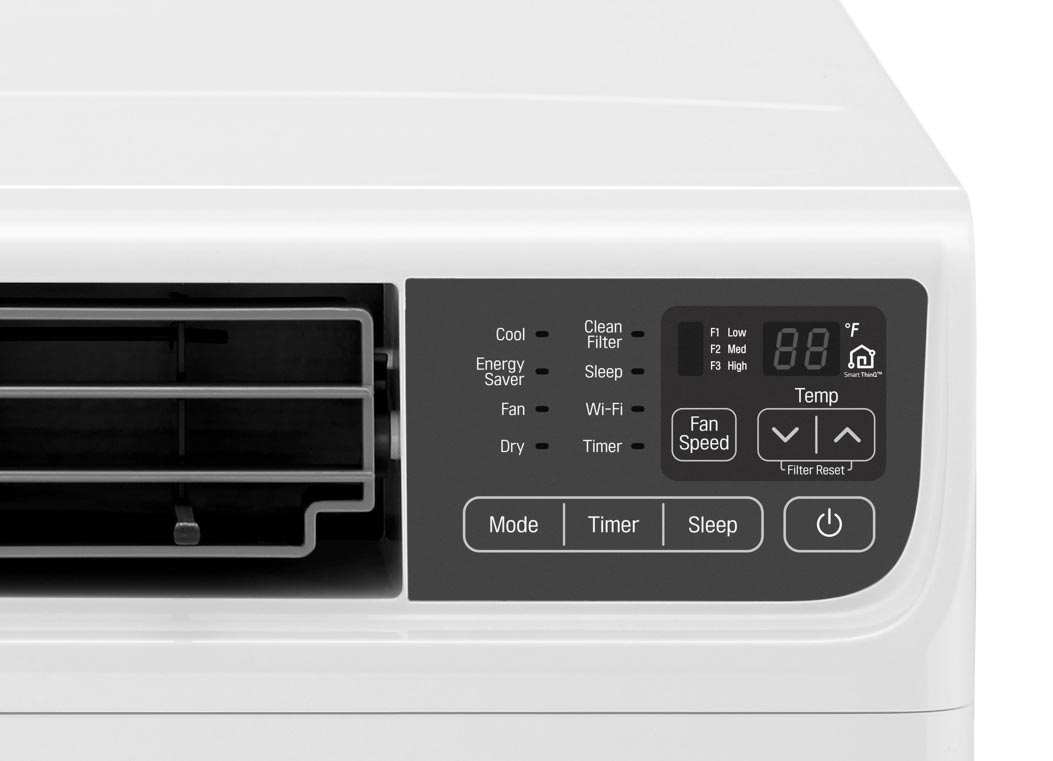
The Dual Inverter air conditioner has an energy-saver mode; when this is set, once the unit has cooled a room to the temperature you set, the air conditioner winds down, then turns off entirely. It will then wake up every 3 minutes to circulate some air and check to see if more cooling is needed. While this saves energy, it didn't offer me (or my wife) the soundest of sleep; the sudden absence of sound, followed by intermittent bursts of activity, woke us.
Ultimately, I set the air conditioner to Cool and the fan speed to Medium, and we dozed off to the unit's quiet, steady thrum.
App: Not so cool
As with most window units, you can control LG's model using buttons on the air conditioner itself, as well as a bundled remote; I found that both were a cinch to use.
You can also control the air conditioner using LG's SmartThinQ app (available for both Android and iOS), but this could use some work. While it was easy enough to connect the A/C to the app, trying to do something as simple as scheduling the air conditioner to turn on and off was much less obvious.
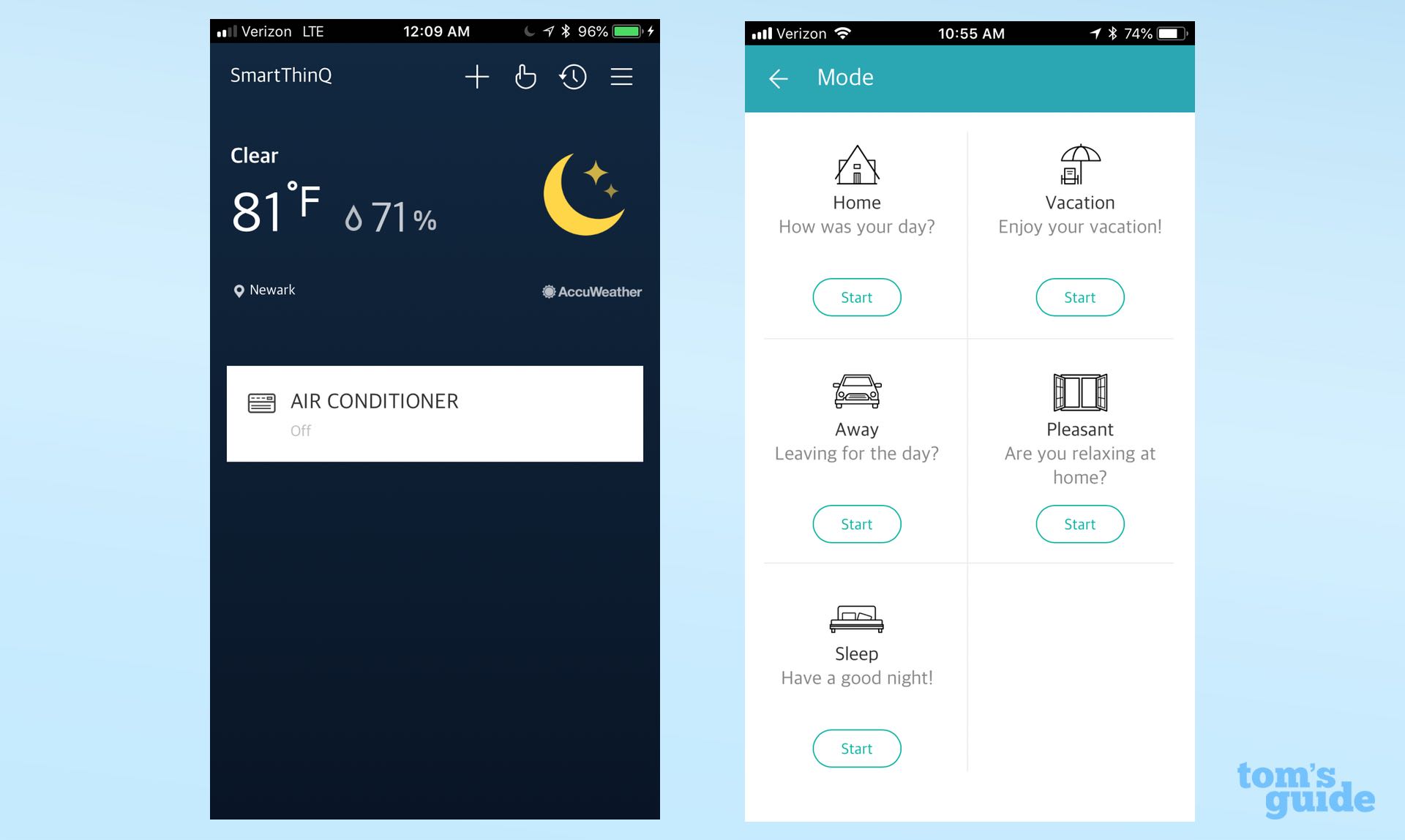
For example, there's a menu option called Reservation, which opens a screen with four options: Sleep Timer, Off Timer, On Timer and Weekly Reservation. Selecting any one of these lets you set those timers, as well as when you want them to turn on and off during the week, but the process is not very clear. "Reservation setting" makes it sound like I’m trying to book a table at a restaurant. Annoyingly, you can't adjust any of these settings unless the air conditioner is running.
Some of the icons are obtuse, too. At the top of the home screen is an icon that looks like a clock; you would think that this accesses the scheduling feature, but it merely leads you to a Device Usage History screen.
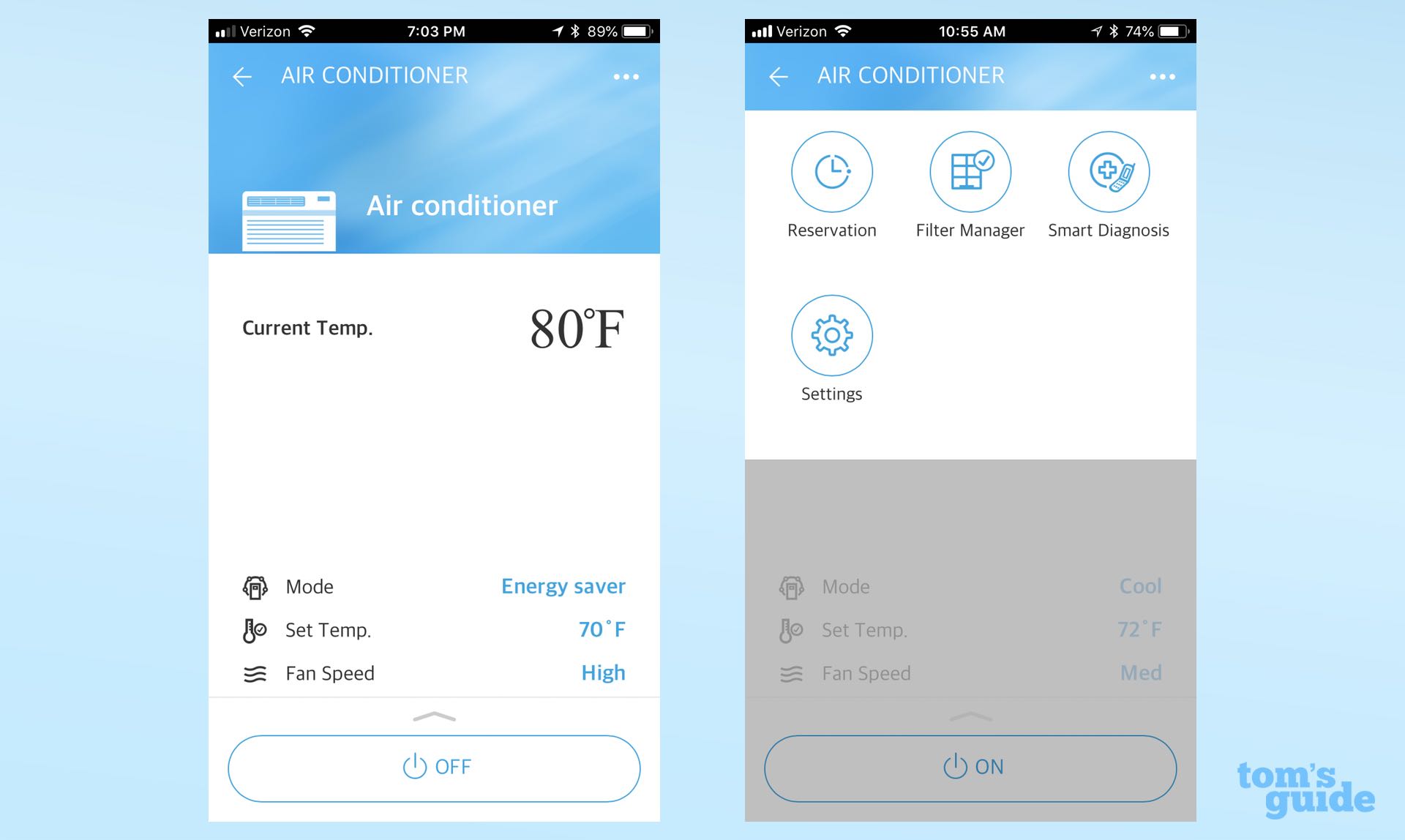
Also at the top is an icon that looks like a finger pointing. This opens a screen that lets you add various SmartThinQ-enabled LG products into five modes: Home, Vacation, Away, Pleasant and Sleep. You can't add the air conditioner to the last two of these modes (Pleasant, Sleep), which is a shame, because I like to lower the air conditioner's fan speed when I go to bed.
You can control the air conditioner using Alexa and Google Assistant — handy for when you're already in bed and can't find the remote. However, you're pretty limited in how much you can integrate it into your smart home system.
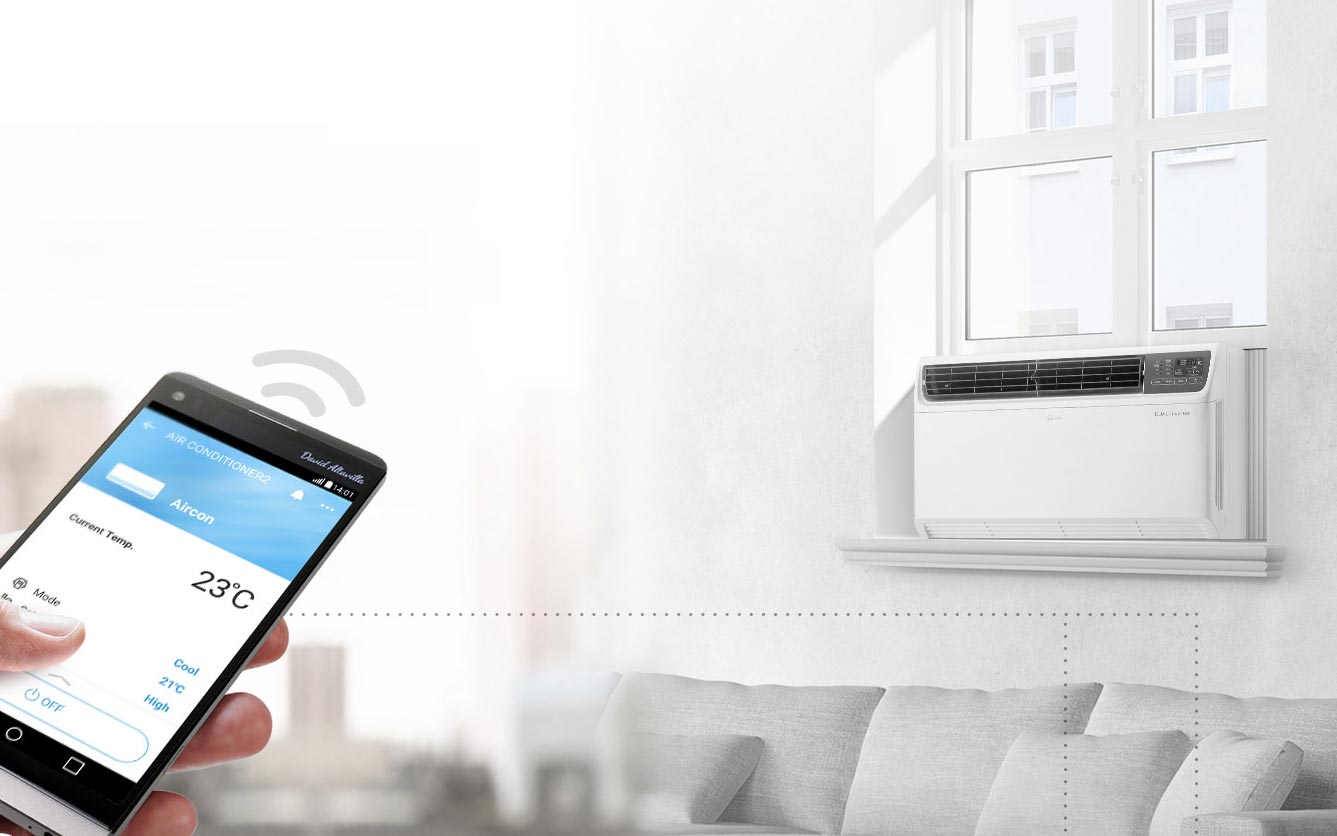
If you want full control of the air conditioner with Alexa, you have to enable not one, but two SmartThinQ skills (Basic and Complete). The Basic skill lets you turn the air conditioner on and off, check its status, and set the temperature. This skill also provides native control through Alexa. This lets you connect the air conditioner to Alexa routines so you can have the unit automatically turn on to a set temperature when you say, "Alexa, I'm home." It also means that you can simply say, "Alexa, turn on the air conditioner."
The Complete skill gives you more control over the air conditioner, letting you adjust fan speeds and modes. But to use these functions, you have to say, "Alexa, tell LG to turn on the air conditioner."
Similarly, while the Google Home app instantly recognized the air conditioner and added it as a device, you can't add the A/C to a Routine. So, for example, you can't have the air conditioner turn on to a certain temperature when you say, "Hey, Google. Goodnight."
Value
LG offers its Dual Inverter air conditioner in three sizes: 14,000 BTUs ($479); 18,000 BTUs ($569); and 22,000 BTUs ($649).
While you're definitely paying a premium for both the smarts and the dual-inverter technology, it isn't that big of a markup. For instance, while LG does not sell any other smart Wi-Fi controlled window air conditioners in those sizes; the closest is a 12,000-BTU model that lacks the dual inverter technology, which sells for $389.
Among other brands, Kenmore sells a 12,000-BTU smart air conditioner for $449, while Frigidaire has a 10,000-BTU smart AC that costs $399.
One way in which air conditioners'’ efficiency is measured is by calculating their energy-to-efficiency ratio (EER); the higher the EER, the better. The LG'’s EER of 11.2 is very good, but Kenmore'’s 12,000-BTU smart window AC has a higher EER of 12.1.
Bottom Line
LG made a great-looking window air conditioner that cools efficiently and quietly, and at $469, it's not that much more expensive than nonsmart units. However, LG needs to improve its SmartThinQ app before this air conditioner is truly smart.
Credit: LG

Michael A. Prospero is the U.S. Editor-in-Chief for Tom’s Guide. He oversees all evergreen content and oversees the Homes, Smart Home, and Fitness/Wearables categories for the site. In his spare time, he also tests out the latest drones, electric scooters, and smart home gadgets, such as video doorbells. Before his tenure at Tom's Guide, he was the Reviews Editor for Laptop Magazine, a reporter at Fast Company, the Times of Trenton, and, many eons back, an intern at George magazine. He received his undergraduate degree from Boston College, where he worked on the campus newspaper The Heights, and then attended the Columbia University school of Journalism. When he’s not testing out the latest running watch, electric scooter, or skiing or training for a marathon, he’s probably using the latest sous vide machine, smoker, or pizza oven, to the delight — or chagrin — of his family.
